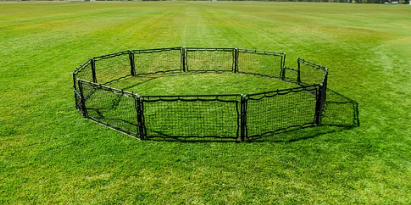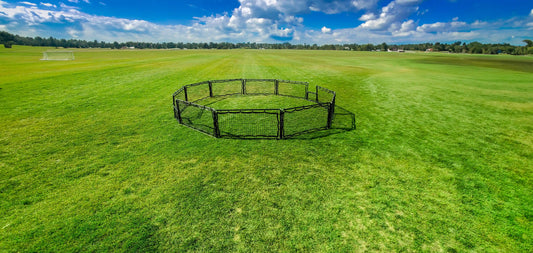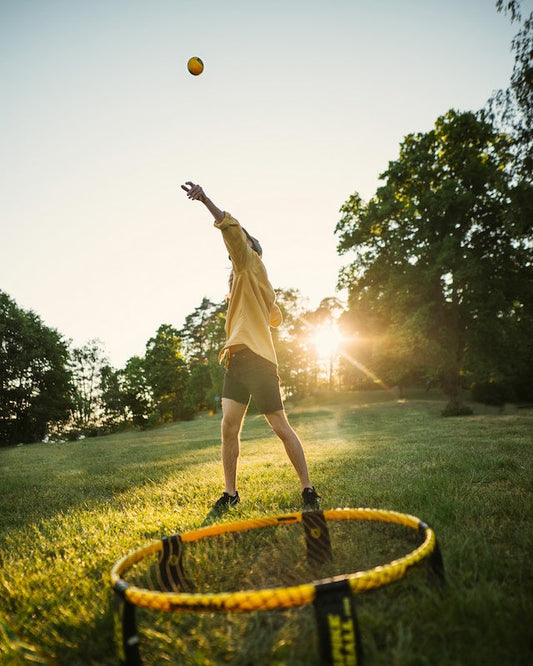Welcome to our latest blog, dedicated to all the physical education teachers out there looking for fresh and engaging teaching resources! Today, we're specifically focusing on the top 7 best throwing games for pe. These games are fantastic for developing students' throwing and catching skills. As a physical education teacher, you know the importance of keeping your lessons varied and exciting, and that's exactly where these games come in. From classic favorites to innovative new activities, we've scoured the best of the best to provide you with a list that will invigorate your curriculum. So, whether you're looking to spice up your lesson plans or just want some new ideas, these throwing games are sure to hit the mark and keep your students actively engaged. Let's get ready to throw some fun into physical education!

Cornhole/Bean Bag Toss:
Equipment:
- Cornhole Boards: 1 for every team
- Bean Bags: Traditionally 4 per team, any more or less tends to affect gameplay.
- Playing Area: Standard regulation distance between boards is 27 ft, but adjust for the grade level of your pe class.
Gameplay:
- Two teams, each consisting of two to three players, take turns.
- Team members stand beside their designated board.
- Players take turns tossing four bean bags each per round.
- Scoring is as follows:
- A bag that lands on the board is worth 1 point.
- A bag that goes through the hole (cornhole) is worth 3 points.
- Bags that hit the ground before landing on the board do not score any points.
- After all eight bags are thrown, the points for each team in that round are calculated. The game usually continues until one team reaches a predetermined score, often 21 points.
Competitive Rules:
- Cancellation Scoring: If both teams score in a round, the difference is calculated, and only the higher-scoring team earns points.

Soft-contact Dodgeball:
Soft-contact dodgeball is a brand new pe game and a different way to play dodgeball that removes the targeting and hard contact, while maintaining the competitive and fun aspects of playing dodgeball. Here’s what equipment you’ll need:
Scotch tape OR a gym floor with markings for volleyball
4-6 Beach Balls (or equivalent large soft ball)
Set Up: With the tape, mark off two equally sized rectangular areas. If you have a pre-marked volleyball court, there’s no need to mark anything. Mark the outer four corners with the cones, then split the beach balls evenly between the sides.
How to Play: Split the class into two, and have them always stay in the designated areas, except to retrieve an errant ball. Students must pick up the beach balls with both hands and turn to face away from the opposing team - then throw the ball backwards over their head. Make sure students keep good spatial awareness so that they don’t accidentally hit a teammate. A player gets out when a beach ball falls on them or if a ball they threw is caught. The game ends when one team only has one-third of their players left - and the other team wins. This ensures students stay in longer and that players aren’t ganged up on towards the end of the game.

Hula Hoop Toss:
Equipment:
Cones: The taller the better, but whichever cones you have are the ones that work best. Try to have anywhere between 10-15 cones out on the floor.
Hula Hoops: 1 per student or as many as possible and have students cycle through hoops.
Poly Dots/Tape: Just something to mark the floor where students must stand behind.
How to Play: Place the poly dots or tape on the floor in a straight line. Then, at varying lengths away from the poly dots, place the cones at a distance appropriate for your age group - feel free to adjust the cones mid-activity if needed. Have students start on one side of the line and work their way down it, only moving to the next poly dot after successfully throwing the hula hoop over the corresponding cone.
Alternate Ways to Play: Have the cones snaking down the middle of the gym, with two rows of poly dots on either side. Split the class in half and have them race to get everyone on their team through the line.
Extra Exercise Version: When students are retrieving their hoops off the cones, have them hop on one foot there and back, crab walk, skip, or some other movement.

Ball Toss Relay:
What you’ll need: A tennis ball, a soccer ball, a basketball, and a beach ball and/or yoga ball.
How to Play: Have students form a circle with an arms length distance between them. Have one kid start with the ball, and toss it to the next kid. If they catch it, they pass it on. If the class successfully passes the ball around the circle, each child takes two steps outward and the next size ball is added to the rotation. You can start the balls right next to each other or on opposite sides of the circle. If they drop the ball(s), remove one ball and have them complete a rotation before adding it back in. The class “wins” if they can successfully pass every ball around the circle simultaneously.

Ultimate Frisbee:
What you’ll need: A frisbee, and a large rectangular area, and cones to mark “end zones”, similar to a football or soccer field.
How to play: Split your class into two teams. Each team aims to score points by catching the disc in the opponent's end zone. The game starts with a 'pull' (a throw-off), after which the receiving team advances the frisbee by passing it between players. Players can't run while holding the frisbee and must establish a pivot foot for movement. Scoring occurs when a player catches the disc in the opposing end zone. Possession changes if the frisbee is intercepted, goes out of bounds, or isn't thrown within ten seconds (stall count). The game ends when either a predetermined score or a time limit is reached.

Target Toss Relay:
What you’ll need: 2 Bean bags, wiffle balls, or equivalent sized balls, 10-15 assorted buckets, large cups, and baskets of varying sizes, 1 large jump rope.
How to Play: Form a large semi-circle of the buckets, cups, and baskets. With the jump rope, form a smaller semi-circle within the large one. Split the class into two teams and give each team a bean bag. Have each team stand on opposite sides of the semi-circle. To start, one player from each team will stand on their side of the semi-circle, and throw their bean bag into the bucket in front of them. With a successful toss, they advance around the semi circle. When two players are competing for the same bucket, have them stand a foot apart so as to not bump arms, and remind students to play fair. Once a player has completed the semi-circle, have them run back to their team and pass the bean bag to the next player. The first team to finish getting everyone around the circle wins! Then, shuffle the teams up and play again!

Frisbee Golf:
Equipment Needed:
- Frisbees/Discs: Standard playing frisbees, one for each student or team.
- Cones: To mark tee-off points and boundaries.
- Hula Hoops: These act as targets. Place them at varying distances to create different 'holes'.
- Markers or Flags: To indicate the course layout and number each hole.
- Paper and Pencils: For students to keep track of their throws.
Setup:
- Layout a course with a series of holes, using hula hoops as the targets. The number of holes can vary based on space and time constraints.
- Mark tee-off points with cones at a reasonable distance from each hula hoop.
- Use markers or flags to guide players through the course.
Students aim to throw the frisbee from the tee-off point into the hula hoop in as few throws as possible. Modify the throwing distances and layouts depending on which age group you play with.
And there you have it, folks – our roundup of the top 7 throwing (and catching games) for PE lessons. Each game has been carefully selected to not only enhance throwing skills but also to boost the overall experience in your physical education class. Remember, developing motor skills through physical activity is crucial, especially for young kids, and these games are designed to do just that in a fun, engaging way. So, go ahead, give them a try, and watch as your students improve their throwing abilities while having a great time. Keep inspiring those young athletes, and until next time, keep making physical education an adventure of learning and fun!
For the most innovative sports equipment that can be used for many throwing and catching games and any other need, click here!







